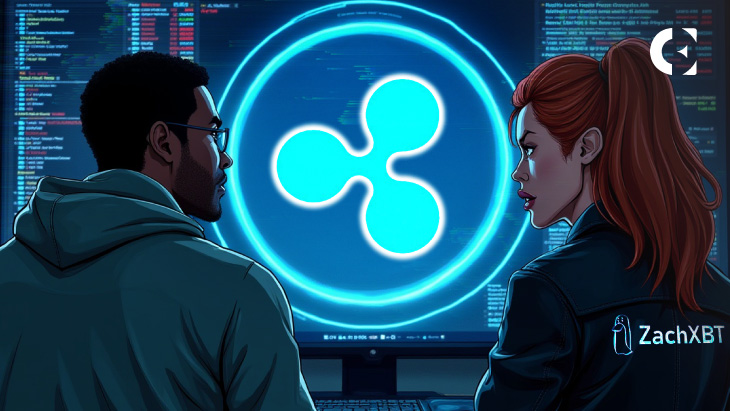- ZachXBT cites insider control over Ripple’s XRP supply as the primary user concern.
- The on-chain investigation highlights misrepresented partnerships and “lost” adoption.
- Ripple now faces criticism despite the SEC settlement and ETF approval prospects.
Blockchain analyst ZachXBT clarified why Ripple is unpopular with most cryptocurrency users despite recent legal victories and market turbulence. In response to discussions that sparked with Ansem’s tweet about Chainlink and Ripple, ZachXBT gave several reasons why users are suspicious of Ripple and the XRP token.
The major concern is on the distribution of XRP, with ZachXBT noting that it is “heavily bundled by insiders.” The token bundling by major firm leaders and early adopters creates continuous selling pressure and does not allow the price to find its natural level.
Partnership Claims and Technical Shortcomings Drive Criticism
ZachXBT flagged false collaboration claims that hyped adoption without delivering real utility. These overblown payment corridor usage claims and banking collaborations generated community distrust over time.
The analyst also mentioned Ripple’s “lost” first-mover advantage, which means the company lost its first-mover advantage in cross-border payments. Competition has caught up with the lost ground, while Ripple has been busy fighting legal battles rather than focusing on technical advancements and implementation.
Other criticisms include “bad mechanics like partial payment exploits” that undermine network security and user trust. Technical vulnerabilities and network design flaws have created operational concerns among developers and institutional users.
Recent Developments Fail to Address Core Issues
Despite the decisive outcome of the Ripple-SEC court fight, user sentiment remains mixed because of entrenched structural problems. Ripple’s $200 million acquisition of Toronto-based stablecoin payments platform Rail is aimed at making RLUSD an enterprise payments contender. Critics are dubious, however, as to whether this acquisition strategy is fixing tokenomics and governance problems.
XRP ETF approval prospects have increased to nearly 90% since the SEC settlement is in effect, with asset managers such as Grayscale, Franklin Templeton, 21Shares, and ProShares applying. Institutional demand opposes retail community skepticism regarding Ripple’s long-term value proposition.
The disparity between regulatory advancements and ongoing user criticism signifies issues in Ripple’s system. The interpretation of ZachXBT suggests that more than just legal victories are needed to overcome the issues inherent in token distribution and their utility.
Lack of proper analytics infrastructure, as indicated by the researcher, hinders transparency into the actual usage of XRP in payments versus speculative trading. Such transparency hinders the objective assessment of Ripple’s claimed payment adoption success.
Related: Analyst Predicts a $7.75 XRP When Bitcoin Hits $145,000 in 2025
Disclaimer: The information presented in this article is for informational and educational purposes only. The article does not constitute financial advice or advice of any kind. Coin Edition is not responsible for any losses incurred as a result of the utilization of content, products, or services mentioned. Readers are advised to exercise caution before taking any action related to the company.







